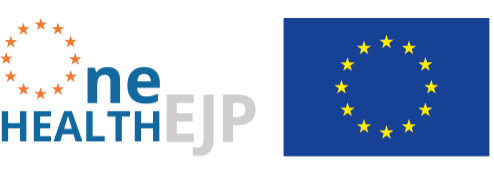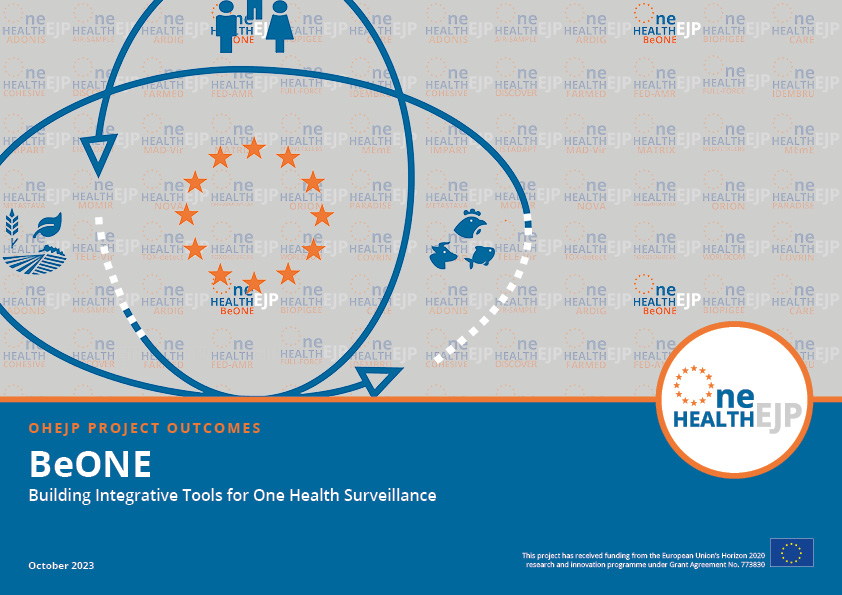Seestraße 10, Berlin, Berlin, Germany
Waterloo Road, London Borough of Lambeth, England, United Kingdom
Ullevålsveien 68, Oslo, Oslo, Norway
Aleja Partyzantów 57, Puławy, województwo lubelskie, Poland
Lovisenberggata 6, Oslo, Oslo, Norway
Max-Dohrn-Straße 8, Berlin, Berlin, Germany
Antonie van Leeuwenhoeklaan 9, De Bilt, Utrecht, The Netherlands
Rua Rio Ave 1600, Carnide, Área Metropolitana de Lisboa, Portugal
Artillerivej 5, Copenhagen, Region Hovedstaden, Denmark

The Project #BEONE
| Start: | 1 January 2020 |
| Duration: | 2.5 Years |
| Domain: | Foodborne Zoonoses |
| Keywords: | Surveillance, WGS data, Visualisation, Sharing, OH Food Safety |
| Contact: | Katrine Grimstrup Joensen(SSI) & Sofie Holtsmark Nielsen(SSI) |
BeONE: Building Integrative Tools for One Health Surveillance
The ultimate goal of the BeONE project has been to develop integrative solutions, where molecular and epidemiological data for foodborne pathogens can be interactively analysed, visualised and interpreted by experts across disciplines and sectors, thus contributing to a sustainable and more efficient routine surveillance following a One Health approach.
In BeONE a harmonised data model has been created. An ontology system with predefined epidemiological metadata fields has been created for the BeONE system, which is interoperable with the EFSA Data Collection Framework catalogues. A conceptual model of the clustering and a simulation-based algorithm for bacterial evolution has also been built, which emphasises the need for flexible thresholds in clustering used to detect outbreaks. A server-based web application that can work directly on the database of shared samples and metadata, and that launches ReporTree, a novel surveillance-oriented tool that strengthens the linkage between genomic and epidemiological data by rapidly identifying genetic clusters at any (or all) sample distance thresholds (e.g., for outbreak detection) and generating surveillance-oriented reports for the derived clusters. In interconnection with the Datahub, epidata can be viewed and filtered in tables and geographically placed on a map and phylogenetic trees (with clustering data) can be visualised in the developed BeONE dashboard.
Project Outputs
Resources
One Health Sequencing for Surveillance Handbook: In collaboration with the ORION project, we wrote a handbook covering the main technical and practical aspects associated with the application of WGS for foodborne diseases surveillance (Deliverable 1.1). By following a simple and straightforward writing and structure, this document can be easily understandable by laboratory staff starting in the field, helping national and local laboratories to build capacity and competence on the usage of genomics methods for surveillance purposes.
Listeria monocytogenes dataset: We compiled the so-called “BeONE dataset” for L. monocytogenes. This corresponds to a set of anonymized sequencing reads and genome assemblies of 1,426 isolates of this species shared within the BeONE consortium. An additional dataset with 1,874 public isolates has also been assembled and is available here. The combination of both datasets is expected to potentiate the genetic diversity necessary for certain genomic analysis (details in Deliverable 1.2), thus representing a useful asset in future surveillance- and research-oriented studies.
Salmonella enterica dataset: We compiled the so-called “BeONE dataset” for S. enterica. This corresponds to a set of anonymized sequencing reads and genome assemblies of 1,540 isolates of this species shared within the BeONE consortium. An additional dataset with 1,434 public isolates has also been assembled and is available here. The combination of both datasets is expected to potentiate the genetic diversity necessary for certain genomic analysis (details in Deliverable 1.2), thus representing a useful asset in future surveillance- and research-oriented studies.
Escherichia coli dataset: We compiled the so-called “BeONE dataset” for E. coli. This corresponds to a set of anonymized sequencing reads and genome assemblies of 308 isolates of this species shared within the BeONE consortium. An additional dataset with 1,999 public isolates has also been assembled and is available here. The combination of both datasets is expected to potentiate the genetic diversity necessary for certain genomic analysis (details in Deliverable 1.2), thus representing a useful asset in future surveillance- and research-oriented studies.
Campylobacter jejuni dataset: We compiled the so-called “BeONE dataset” for C. jejuni. This corresponds to a set of anonymized sequencing reads and genome assemblies of 610 isolates of this species shared within the BeONE consortium. An additional dataset with 3,076 public isolates has also been assembled and is found here. The combination of both datasets is expected to potentiate the genetic diversity necessary for certain genomic analysis (details in Deliverable 1.2), thus representing a useful asset in future surveillance- and research-oriented studies.
Tools
ReporTree: A pivotal outcome of genomics surveillance is the identification of pathogen genetic clusters/lineages and their characterization in terms of geotemporal spread or linkage to clinical and demographic data. ReporTree is a flexible pipeline that facilitates the detection of genetic clusters and their linkage to epidemiological data, helping to:
- Obtain genetic clusters at any threshold level(s) of a tree, SNP or cg/wgMLST allele matrix, VCF files, sequence alignment, or distance matrix.
- Obtain summary reports with the statistics/trends (e.g., timespan, location, cluster/group composition, age distribution etc.) for the derived genetic clusters or for any other provided grouping variable (e.g., clade, lineage, ST, vaccination status, etc.).
- Obtain count/frequency matrices for the derived genetic clusters or for any other provided grouping variable.
- Identify regions of cluster stability (i.e., threshold ranges in which cluster composition is similar), a key step for nomenclature design.
In summary, ReporTree facilitates and accelerates the production of surveillance-oriented reports, thus contributing to a sustainable and efficient public health genomics-informed pathogen surveillance.
The Project Impact Brochure is available on Zenodo.
Project Assets
Mixão, V., Pinto, M., Sobral, D., Di Pasquale, A., Gomes, J. P., & Borges, V. (2023). ReporTree: a surveillance-oriented tool to strengthen the linkage between pathogen genetic clusters and epidemiological data. Genome Medicine. 15, 43. DOI: https://doi.org/10.1186/s13073-023-01196-1
Linde, J., Szabo, I., Tausch, S.H., Deneke, C. and Methner, U. (2023). Clonal relation between Salmonella enterica subspecies enterica serovar Dublin strains of bovine and food origin in Germany. Frontiers in Veterinary Science. 10, 1081611. DOI: https://www.frontiersin.org/articles/10.3389/fvets.2023.1081611
Pista, A., Silveira, L., Ribeiro, S., Fontes, M., Castro, R., Coelho, A., Furtado, R., Lopes, T., Maia, C., Mixão, V., Borges, V., Sá, A., Soeiro, V., Correia, C.B., Gomes, J. P., Saraiva, M., Oleastro, M., Batista, R. (2022). Pathogenic Escherichia coli, Salmonella spp. and Campylobacter spp. in Two Natural Conservation Centers of Wildlife in Portugal: Genotypic and Phenotypic Characterization. Microorganisms. 10(11), 2132. DOI: https://doi.org/10.3390/microorganisms10112132
Mixão, V., Pinto, M., Sobral, D., Di Pasquale, A., Gomes, J. P, and Borges, V. (2022). ReporTree: a surveillance-oriented tool to strengthen the linkage between pathogen genetic clusters and epidemiological data. Research Square. PPR552299. DOI: https://doi.org/10.21203/rs.3.rs-1404655/v2
Dahl, L.G., Joensen, K.G., Østerlund, M.T., Kiil, K., Møller Nielsen, E. (2021). Prediction of antimicrobial resistance in clinical Campylobacter jejuni isolates from whole-genome sequencing data. European Journal of Clinical Microbiology and Infectious Diseases. 40, 673–682. DOI: https://doi.org/10.1007/s10096-020-04043-y




